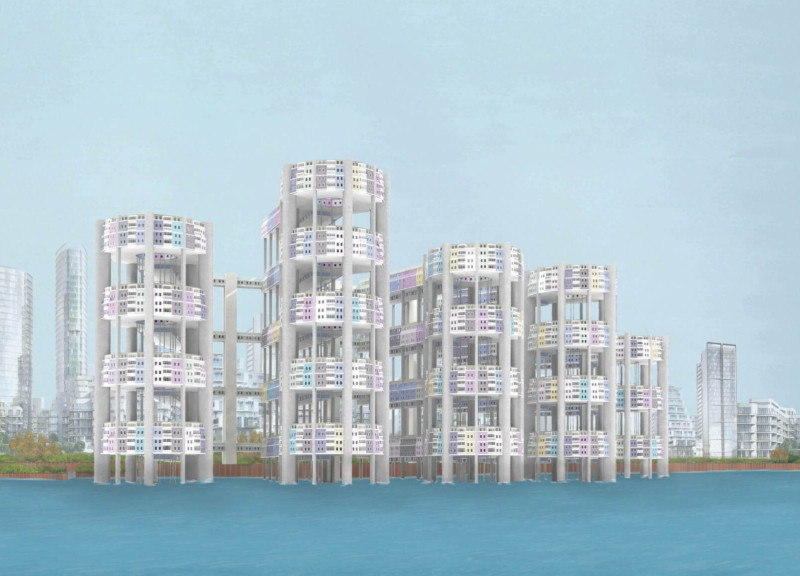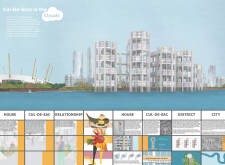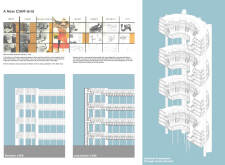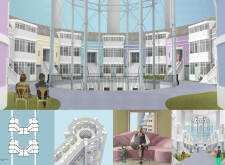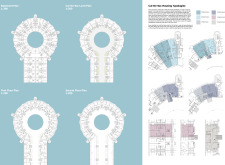5 key facts about this project
Cul-De-Sacs in the Clouds is located along the Thames at the Greenwich Peninsula and aims to tackle the challenges of high-density living in London. It creatively combines elements of suburban design with the principles of vertical habitation. The overall concept focuses on creating a sense of community, promoting social interaction among residents, and responding to the evolving housing needs of the city.
Community-Centric Design
The design features stacked cul-de-sac layouts that encourage neighborly connections. Each residential unit is oriented toward communal spaces, enhancing visibility and promoting engagement. This configuration allows for casual encounters among residents, which can foster relationships and support a sense of belonging.
Inward-Facing Streets
Inward-facing streets form secure, enclosed areas that reduce the impact of external noise and disturbances. This design choice prioritizes safety and promotes social activities, resulting in spaces that feel inviting and intimate. It stands in contrast to traditional urban designs that often expose residents to busy main roads and their distractions.
Diverse Housing Typologies
The project includes a mix of housing types, from single-bedroom flats to larger family maisons. This variety caters to different household sizes and needs, creating an inclusive community. The use of colorful terrace houses aims to provide individuality and personality to the homes, moving away from the often-monotonous appearance of social housing in the region.
Accessible Integration
Accessibility is a key principle in the design. Vertical stacking allows for easy movement across various levels, with interconnected communal areas simplifying navigation. Multiple entry points enhance convenience and comfort, making it easier for residents to engage with outdoor spaces and each other.
Each home is designed to encourage interaction with its surroundings, featuring living areas and kitchens that overlook communal spaces. This approach strives to cultivate a lively atmosphere, enhancing daily life within the community.


